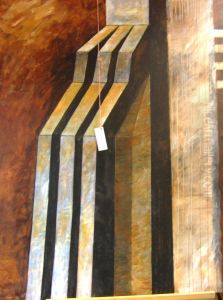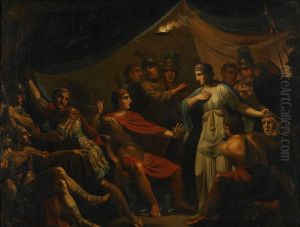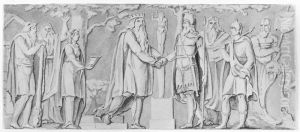Gustaf Erik Hasselgren Paintings
Gustaf Erik Hasselgren was a Swedish painter known for his landscape and marine paintings. Born on June 28, 1885, in the town of Halmstad, Sweden, Hasselgren grew up in a country that was undergoing significant social and industrial changes. From a young age, he showed a strong inclination towards the arts, particularly painting.
Hasselgren's early education in art took place in his native Sweden, but he later traveled to further his studies. He spent time in Denmark and France, countries with rich artistic traditions that greatly influenced his development as an artist. In Denmark, he was inspired by the Skagen Painters, a group known for their depictions of the Scandinavian landscape and seascape. His time in France, particularly in Paris, exposed him to the works of the French Impressionists, whose techniques and use of color would leave a lasting impact on his style.
Throughout his career, Hasselgren favored naturalistic scenes, often depicting the Swedish coastline, boats, and the sea. His paintings are characterized by a delicate interplay of light and color, capturing the unique atmosphere of the Nordic light. Despite the influence of the Impressionists, he maintained a distinctive personal style that resonated with the Swedish public.
Hasselgren was active during a period when Swedish art was gaining more recognition both at home and abroad. He exhibited his works in various galleries and was well-received by critics and collectors alike. His contributions to Swedish art were not limited to his own creations; he also played a role in the artistic community, supporting younger artists and participating in cultural debates of the time.
Gustaf Erik Hasselgren passed away on July 3, 1953. Although he may not be as widely known internationally as some of his contemporaries, within Sweden, his work continues to be appreciated for its portrayal of the Swedish landscape and its reflection of the beauty of the natural environment. His paintings remain a part of Sweden's cultural heritage and can be found in museums and private collections across the country.


